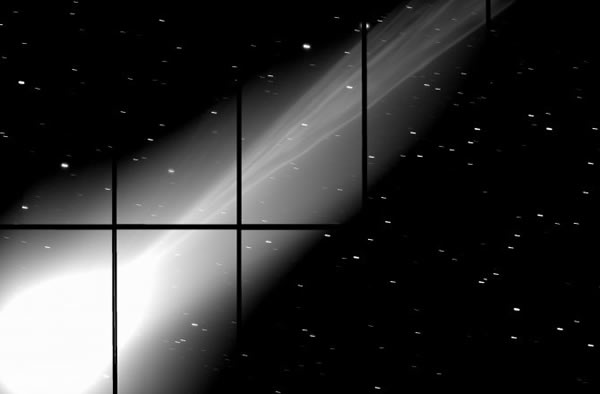Comet Lovejoy's Tail 'Wiggles' in Stunning Photo
Comet Lovejoy (C/2013 R1) image by Suprime-Cam on Subaru Telescope, taken on December 3, 2013 in Hawaii Time. Wavelength is at 450 nm (B-band), with 180 seconds exposure.
With the sad demise of Comet ISON fresh in our minds, it's worth remembering that there's plenty more lumps of space ice where that came from.
Take this sublimating stunner for example. This is C/2013 R1, a.k.a. Comet Lovejoy, a comet that is currently gracing our skies (and became a naked-eye comet in early November). Not to be confused with the "other" Comet Lovejoy (C/2011 W3) that put on an awesome show in 2011, C/2013 R1 was discovered by the same Australian amateur astronomer Terry Lovejoy in September.
Seen here, the intricate detail in C/2013 R1's ion tail has been captured by Stony Brook University astronomers using the Japanese Subaru Telescope, located on Mauna Kea, Hawaii.
This photo was taken on Dec. 3 when Comet Lovejoy was 80 million kilometers (50 million miles) from the Earth. The combination of Subaru's wide field and high spatial resolution allowed the astronomers an intimate look into the comet's tail, showing the gas and dust 'wiggling' while venting from the comet's nucleus.
The long-period comet will reach the point of closest approach to the sun (perihelion) on Dec. 22, coming within 0.81AU (astronomical units, where 1AU is the average sun-Earth distance) of the solar 'surface' (the photosphere).
Taking a "no-drama" orbit close to the sun means Lovejoy isn't expected to become as bright as ISON's maximum, but it will still be a worthwhile target for pre-Christmas astronomers. From Dec. 4 and Dec. 12, the comet can be found in the constellation Corona Borealis as it drops deeper into the sun's gravitational well, dropping lower in the northeastern pre-dawn skies. (Dec 6, 2013 02:10 PM ET // by Ian O'Neill)












